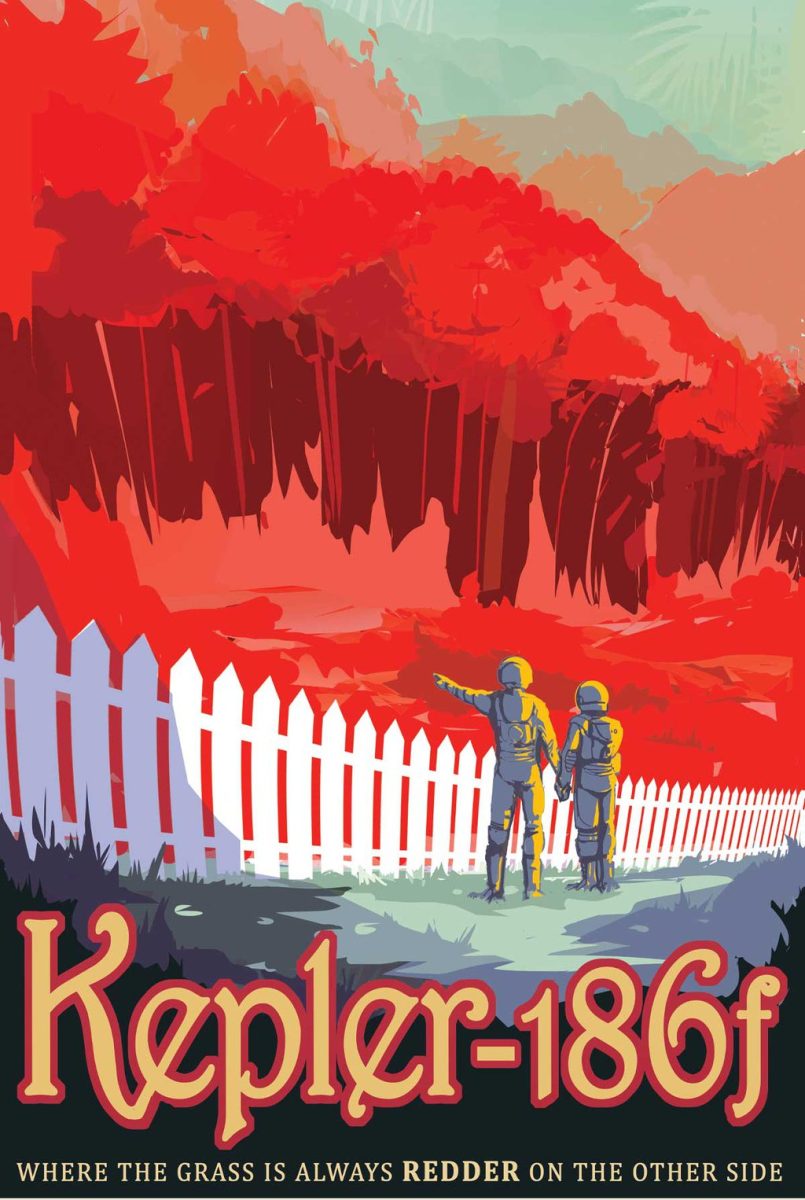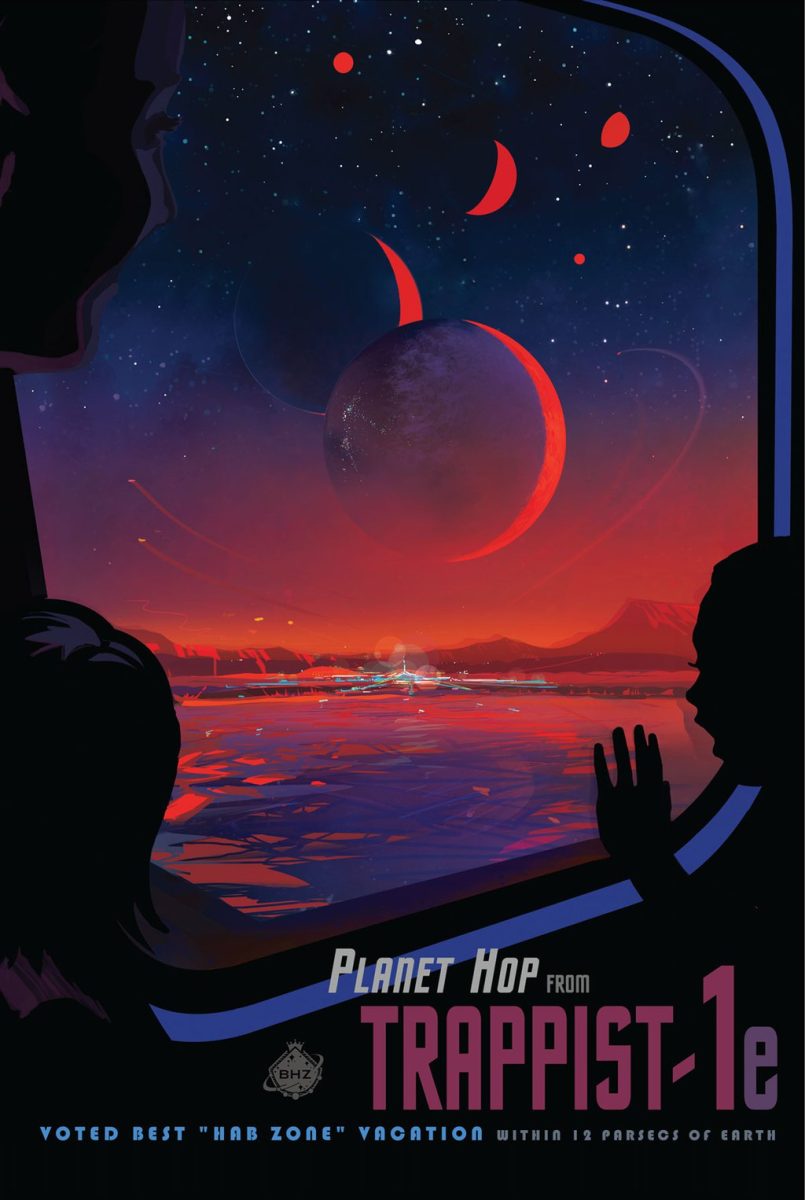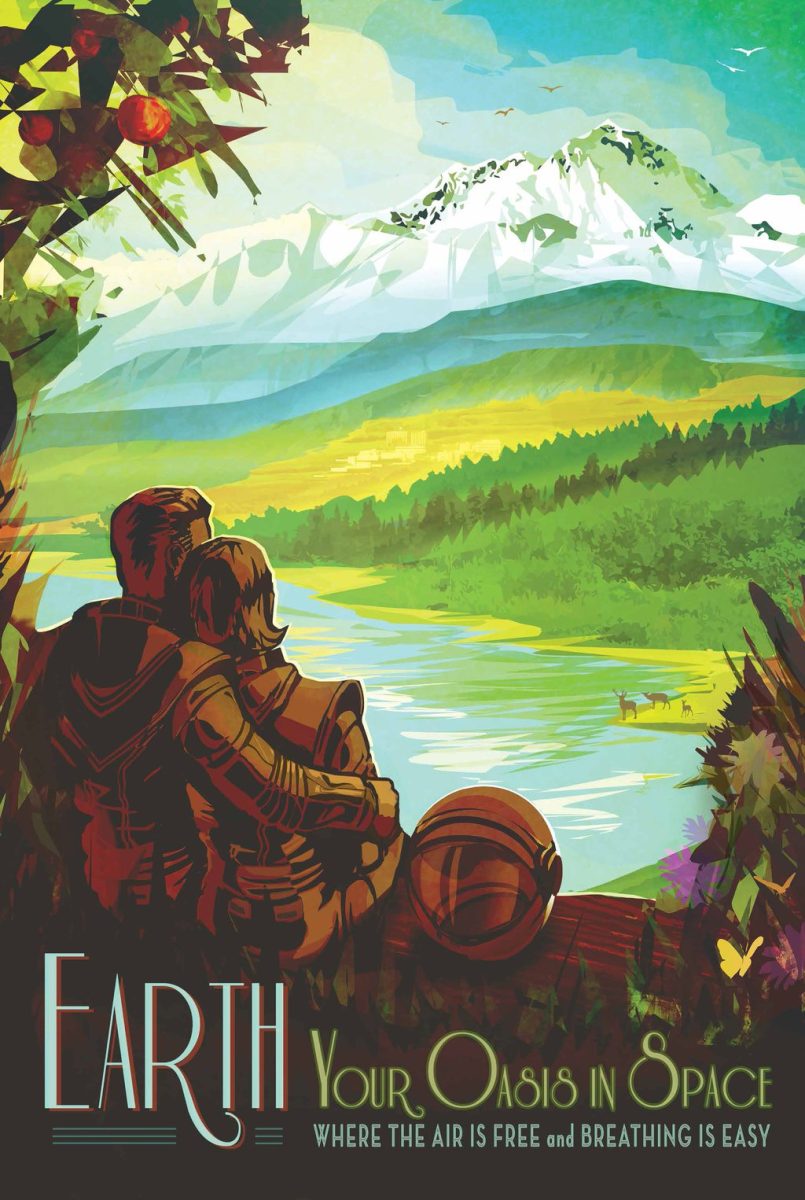NASA travel agency expands to exoplanets
Unfortunately, we don’t have a faster-than-light propulsion yet, but that doesn’t stop NASA from playfully anticipating things. What if?
A year on this planet is shorter than a day on Earth: 17 hours.
55 Cancri e is eight times more massive than Earth and has a surface gravity 2.2 times that of Earth.
Even if you have fireproof shoes, a relaxed walk is not really possible. But once you get used to this gravity, you have muscles like cable ropes.
How hot is 55 Cancri e? The answer is: pretty hot. The day side reaches temperatures of up to 2400 degrees Celsius, while on the night side, at 1300 degrees, the melting point of iron comes close. A tourist attraction to admire from a safe distance, in other words. On to the next destination, the very first exoplanet to be discovered.

51 Pegasi B is also extremely hot because it is close to its star. This is also the reason that this exoplanet was discovered so quickly. Heavy exoplanets that are close to the star cause this star to rock due to their gravity. This is how this exoplanet was discovered.
51 Pegasi B is not an Earth-like planet, but a gas giant very close to the star. These planets are known to astronomers as hot Jupiters. With a surface temperature of around 1300 degrees C, this planet is also not really suitable for a visit. We’ve had enough of the heat for now, so the journey now goes to a planet without a sun.

Our Milky Way has a large number of wandering planets. These are planets that are not bound to a star. The temperature in the universe is around three Kelvin, that is, 270 degrees below zero. That’s so cold that every gas freezes to snow, except helium, which is superfluid at this temperature. In practice it is slightly warmer, because radioactive elements occur in the interior of the planet.
One of these planets is PSO J318.5-22, about 80 light-years away. This is not really a stray planet, but it is better to call it a brown dwarf. With a surface temperature of 800 degrees and a mass six times that of Jupiter, NASA’s enticing poster is a little too optimistic. Hot dust and molten iron also make this planet, or is it a star, not really suitable for a landing.
We finally want to stretch our legs on a real planet, so we leave for the next destination.

The super-Earth HD 40307g may not be a super-Earth, but a Neptune-like ice giant. We do know that the planet orbits in the habitable zone. So if this is a super-Earth, then there is quite a chance that life could exist. With an average temperature slightly above zero, we can finally stretch our legs a bit. Although the high gravity takes some getting used to. Whether there is an oxygen atmosphere on this super-Earth is not known.

Here on Earth, of course, we only have one sun, but most stars occur as binary stars. Astronomers used to think that planetary orbits around a binary star cannot be stable, but that turns out not to be entirely true.
For example, the planet Kepler-16b revolves around a binary star. This is probably also a gas giant, because its mass and density are about the same as Saturn. A walk as you see on the poster is therefore only possible on a moon that orbits this planet. It is bitterly cold here: about as cold as the deep interior of Antarctica in the dead of winter.

We are lucky that as earthlings we have a yellow-green star for our sun. Because 80% of all stars are red dwarfs. These stars last much longer than larger stars such as the sun. That makes astronomers very interested, because planets around these stars have much more time to develop life. Perhaps even life on Earth comes from a fragment of a planet orbiting a red dwarf star. The oldest organisms on earth that perform photosynthesis are especially sensitive to red light.
An example of a planet orbiting a red dwarf star is Kepler-186f. This is the first Earth-like planet in the habitable zone ever discovered. Also, Kepler 186f is about the size of Earth. If there are plants on this planet, they will probably be a different color from those on Earth, in order to make maximum use of the red light. This is probably a planet with a lot of ice, because the planet receives less light than Mars. But if the planet has a thick atmosphere, it can still be cozy.

But now it’s time to visit the most beautiful planet in the known universe…

Home, sweet home. Probably, for the human settlers who will become in the rest of the universe in the future, the earth will remain a paradise. With its unique ecosystem, pleasant gravity, and pleasant climate, for example. And of course details such as: being able to breathe the air without a spacesuit. In short, Earth is an oasis in the arid wasteland of the cosmos. Let’s be careful with it.



